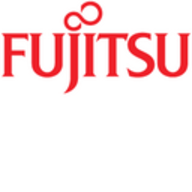

HPE NonStop and Fujitsu Primergy BX400 Series compete in the server market. HPE NonStop often holds an advantage in features and reliability, while Fujitsu Primergy BX400 Series may stand out for its cost-effectiveness.
Features: HPE NonStop is known for continuous availability, scalability, and fault tolerance. Its architecture supports high transaction volumes, making it ideal for critical applications. Meanwhile, Fujitsu Primergy BX400 Series offers modularity and energy efficiency, providing a compact design. While HPE NonStop leads in robustness, Fujitsu Primergy focuses on efficient resource utilization and flexibility with hot-swappable components.
Ease of Deployment and Customer Service: HPE NonStop's setup process can be challenging but is supported by robust customer service offering comprehensive assistance. Fujitsu Primergy BX400 Series provides a straightforward deployment with intuitive management tools and responsive support, which makes it an attractive choice for simplifying IT infrastructure.
Pricing and ROI: HPE NonStop generally involves a higher initial investment with a strong long-term ROI due to its reliability and performance for mission-critical tasks. Fujitsu Primergy BX400 Series offers affordability with quick returns through efficient resource use and lower operational costs.


Managing large computing and storage requirements with limited resources, budgets and space is a challenge. The Fujitsu Server PRIMERGY BX400 helps to solve it. It is a fully-featured blade system built from the ground up as a user-friendly and versatile IT infrastructure. Up to eight server and storage blades are all packed into a surprisingly small enclosure that is as easy to install and manage as it is to use.
We monitor all Blade Servers reviews to prevent fraudulent reviews and keep review quality high. We do not post reviews by company employees or direct competitors. We validate each review for authenticity via cross-reference with LinkedIn, and personal follow-up with the reviewer when necessary.